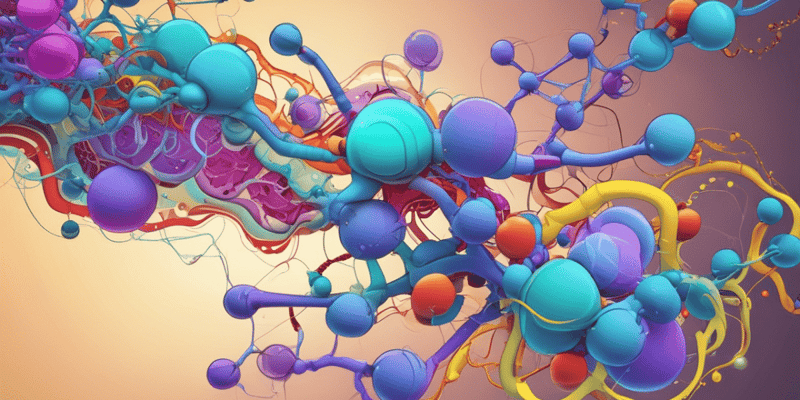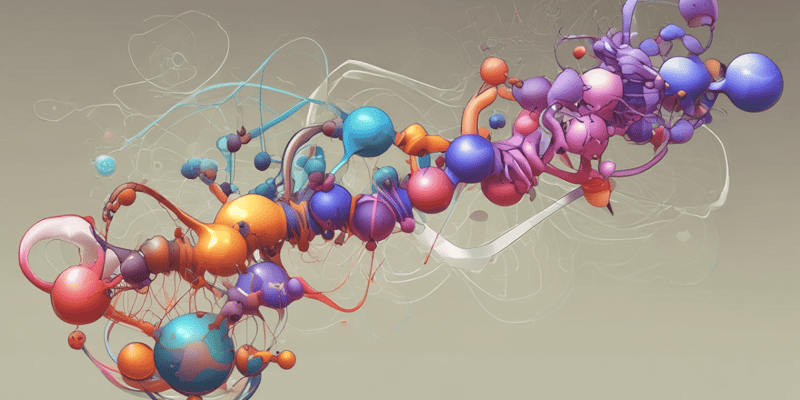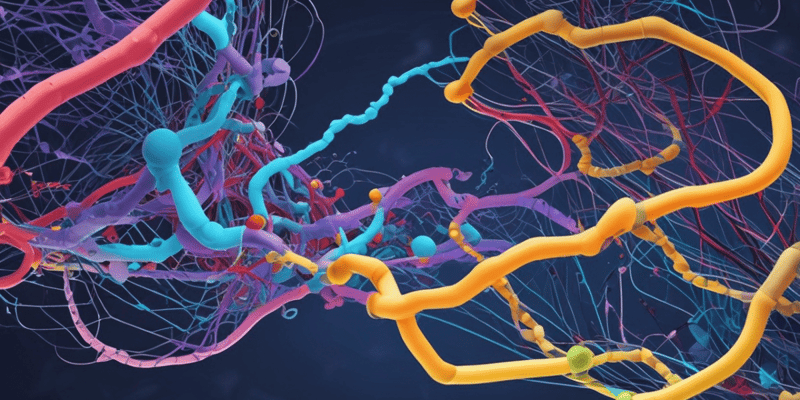Questions and Answers
What is the primary role of enzymes according to the information provided?
Which of the following best describes the importance of enzyme kinetics?
Which factor does not influence enzyme activity?
What type of enzymes are specifically known to catalyze reactions in the glycolysis pathway?
Signup and view all the answers
What is the consequence of enzyme inhibition on substrate conversion?
Signup and view all the answers
Which compound is directly synthesized from fructose-1,6-bisphosphate in glycolysis?
Signup and view all the answers
How do ATP and ADP regulate enzyme activity?
Signup and view all the answers
What is the primary structural characteristic of enzymes that enable substrate recognition?
Signup and view all the answers
Which of the following best describes isoenzymes?
Signup and view all the answers
What defines the kinetic properties of enzymes?
Signup and view all the answers
Study Notes
Enzymes: Biological Catalysts
- Enzymes are proteins with unique structures that are folded to create 3-D active/catalytic sites, enabling specific recognition of substrates that they transform.
- Enzymes are biological catalysts that increase the rate or velocity of chemical reactions without being changed in the overall process.
- Enzymes lower the activation energy, allowing chemical reactions to proceed faster.
Transition State Theory and Induced Fit Model
- Lysozyme is an example of Transition State Theory.
- The Induced Fit Model proposes that substrate binding distorts the substrate into a conformation close to the transition state.
- In the Induced Fit Model, substrate binding can also induce conformation changes to the enzyme.
- Hexokinase is an example of the Induced Fit Model, where the binding of glucose causes two protein domains to close together, closing the binding cleft.
Enzyme Kinetics
- Enzyme kinetics is the study of the rates of enzyme-catalyzed reactions.
- The rate of the reaction is affected by temperature, pH, and substrate concentration.
- The rate of the reaction is reflected by the slope of the curve, while the enzyme capacity is reflected by the height of the curve.
- Saturation of the enzyme with substrate is reached at Vmax, where the enzyme converts substrates into products at its maximal rate.
- Km is the substrate concentration at which the enzyme converts substrates into products at half its maximal rate, reflecting the affinity of the substrate for the enzyme.
Classes of Enzymes
- Oxidoreductases (Class I) catalyze oxidation-reduction reactions.
- Transferases (Class II) catalyze the transfer of groups between molecules.
- Hydrolases (Class III) catalyze the cleavage of bonds coupled with inserting water.
- Lyases (Class IV) catalyze the cleavage of carbon-carbon, carbon-sulphur, and carbon-nitrogen bonds.
- Isomerases (Class V) catalyze the rearrangement of bonds.
- Ligases (Class VI) catalyze the formation of bonds between carbon and oxygen, sulfur, or nitrogen.
Studying That Suits You
Use AI to generate personalized quizzes and flashcards to suit your learning preferences.
Description
This quiz compares and contrasts the Induced Fit Model and Transition State Theory in the context of enzyme kinetics, with a focus on lysozyme as an example of Transition State Theory.




